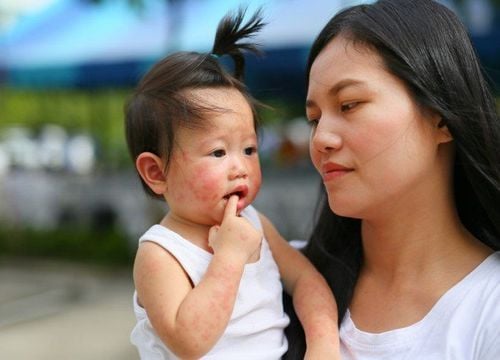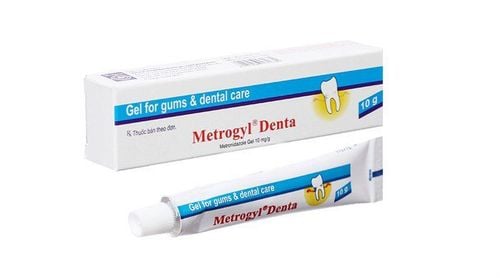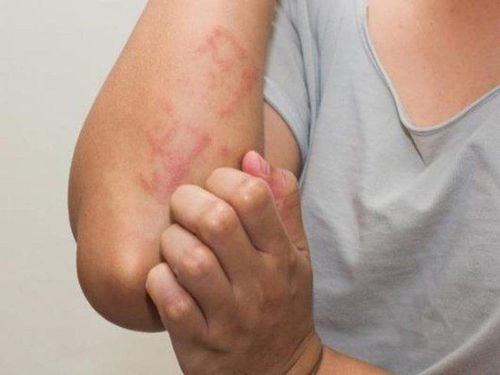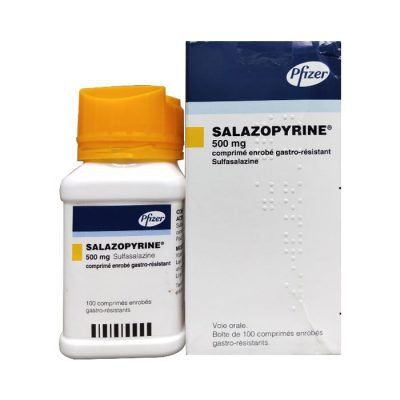Article written by Master of Medicine, Dr. Mai Viễn Phương - Department of Internal Medicine & Outpatient Services - Vinmec Central Park International General Hospital.
The typical symptoms of Crohn's disease originate from the gastrointestinal (GI) tract, causing issues such as abdominal pain, diarrhea, and bloody stools. However, 40% of people with Crohn's disease experience symptoms in other areas of the body, particularly on the skin. Below are some of the most common skin conditions associated with Crohn's disease and their treatment options.
1. Erythema Nodosum
Erythema nodosum causes red, swollen nodules on the skin, typically appearing on the shins, ankles, and occasionally the arms.
This is the most common skin manifestation of Crohn's disease, affecting about 15% of individuals with the condition.
Over time, the swollen areas gradually turn purple. Some people may experience fever and joint pain along with erythema nodosum. Following the treatment regimen for Crohn's disease as prescribed by your doctor can help improve this skin condition.
2. Ulcers
Large open ulcers on the legs, and sometimes in other areas of the body, are indicative of pyoderma gangrenosum, a rare skin condition. This condition affects about 5% of individuals with Crohn's disease and ulcerative colitis.
Pyoderma gangrenosum typically begins as small red bumps resembling insect bites on the shins or ankles. These bumps gradually enlarge and eventually merge into a large ulcer.
Treatment involves the application of medications either injected into or applied directly to the affected area. Covering the wound with clean bandages aids in faster healing and prevents infection.
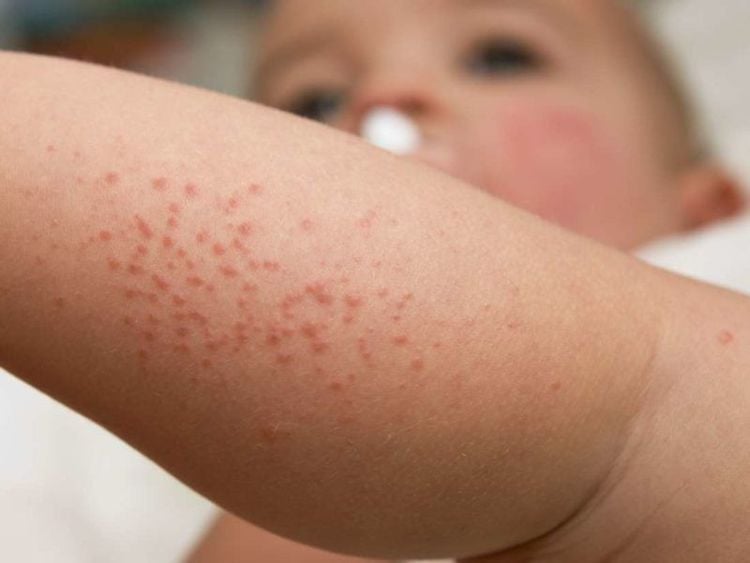
3. Perianal Skin Tags and Anal Fissures
Anal fissures are small tears in the skin or mucous membrane around the anus. People with Crohn's disease may sometimes develop these tears due to chronic inflammation in their intestines. The fissures can cause pain and bleeding, especially during bowel movements.
The fissures may sometimes heal on their own. If not, treatments include nitroglycerin cream, pain-relieving creams, and Botox injections to promote healing and reduce discomfort. Surgery is an option for treating fissures that do not heal.
4. Acne
Acne, which affects many teenagers, can also be an issue for some individuals with Crohn's disease. However, the acne lesions are not caused by the disease itself, but rather by the steroids used to treat Crohn's.
Steroids are typically prescribed for short periods to control Crohn's flare-ups. Once you stop using them, your skin should clear up.
5. Skin tag
Skin Tags are small pieces of skin that typically form in areas where skin rubs against skin, such as the armpits or groin. In Crohn's disease, they can form around hemorrhoids or anal fissures, where the skin becomes swollen.
Although skin tags are harmless, they can become irritated around the anus if feces get trapped in them. Proper hygiene after each bowel movement and keeping the area clean can help prevent irritation and discomfort.
6. Skin tunnels
Up to 50% of people with Crohn's disease develop a fistula, which is a hollow connection between two parts of the body that shouldn't be there. A fistula can connect the intestine to the skin, anus, or even the vagina. Sometimes, a fistula can be a complication of surgery.
A fistula may appear as a swelling or abscess and can be very painful. Feces or other fluids may drain from the opening.
Fistulas are treated with antibiotics or other medications. If the fistula is severe, surgery may be needed to close it.
7. Mouth ulcers
These painful sores form inside the mouth and can cause discomfort when eating, drinking, or speaking. Mouth ulcers are often the result of poor absorption of vitamins and minerals in your digestive system due to Crohn's disease.
You may notice these ulcers when your disease is in a flare-up. Managing flare-ups of Crohn's disease can help reduce them. Over-the-counter mouth pain medications, such as Orajel, can also help relieve pain until they heal.
8. Red spots on the legs
Small red and purple spots may be caused by leukocytoclastic vasculitis, a condition that involves inflammation of small blood vessels in the legs. This condition affects a small number of people with inflammatory bowel disease (IBD) and other autoimmune disorders.
The spots may be itchy or painful, but they typically heal within a few weeks. Doctors treat this condition with corticosteroids and immunosuppressive medications.
9. Herpetiformis
Herpetiformis (Epidermolysis Bullosa Acquisita) is an immune system disorder that causes blisters to form on areas of skin that have been injured. The most common locations for these blisters are the hands, feet, knees, elbows, and ankles. When the blisters heal, they often leave scars.
Doctors treat this condition with corticosteroids, medications like dapsone to reduce inflammation, and immunosuppressive drugs. Individuals with these blisters must be extremely careful and wear protective clothing when playing sports or engaging in other physical activities to avoid injury.
10. Psoriasis
This skin condition causes red, scaly patches to appear on the skin. Like Crohn's disease, psoriasis is an autoimmune condition. The immune system malfunctions, causing skin cells to multiply too rapidly, and the excess cells accumulate on the surface of the skin.
People with Crohn's disease are more likely to develop psoriasis. Two biologic drugs—infliximab (Remicade) and adalimumab (Humira)—are used to treat both conditions.
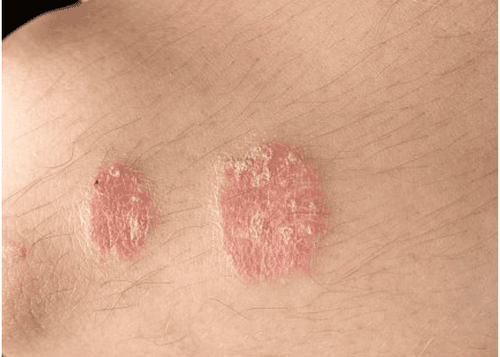
11. Skin depigmentation
Vitiligo is a condition that causes patches of skin to lose color. It occurs when the skin cells that produce the pigment melanin die or stop functioning.
Overall, vitiligo is rare, but it is more common in individuals with Crohn's disease. Makeup can help conceal the affected patches, and medications are available to help even out skin tone.
12. Rash
Small, red, and painful bumps on the arms, neck, head, or torso are signs of Sweet's Syndrome. This skin condition is generally rare but can affect individuals with Crohn's disease. The primary treatment for Sweet's Syndrome is corticosteroid medication.
In conclusion, please inform your doctor if you notice any new skin symptoms. The doctor will help you determine the most appropriate treatment.
Vinmec International General Hospital is one of the hospitals that not only ensures professional quality with a team of doctors and modern medical equipment but also stands out for its comprehensive, professional consultation and treatment services. The hospital offers a civilized, courteous, and safe treatment environment with maximum sterilization.
Reference article source : Epidermolysis bullosa acquisita. (n.d.), Faulkes RE. (2014). Upper limb erythema nodosum: The first presentation of Crohn's disease, Gravina AG, et al. (2016). Crohn's disease and skin.
To arrange an appointment, please call HOTLINE or make your reservation directly HERE. You may also download the MyVinmec app to schedule appointments faster and manage your reservations more conveniently.
